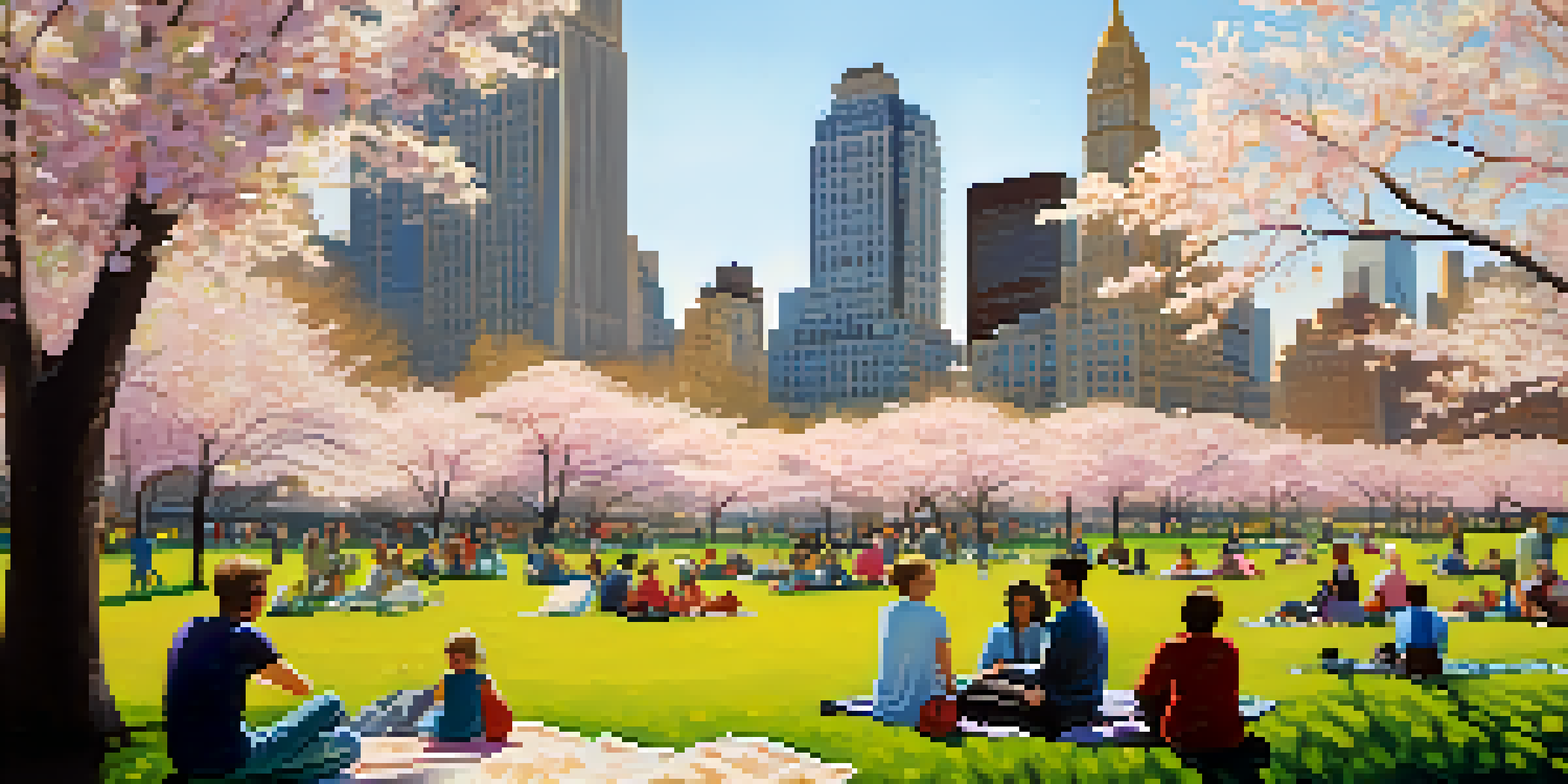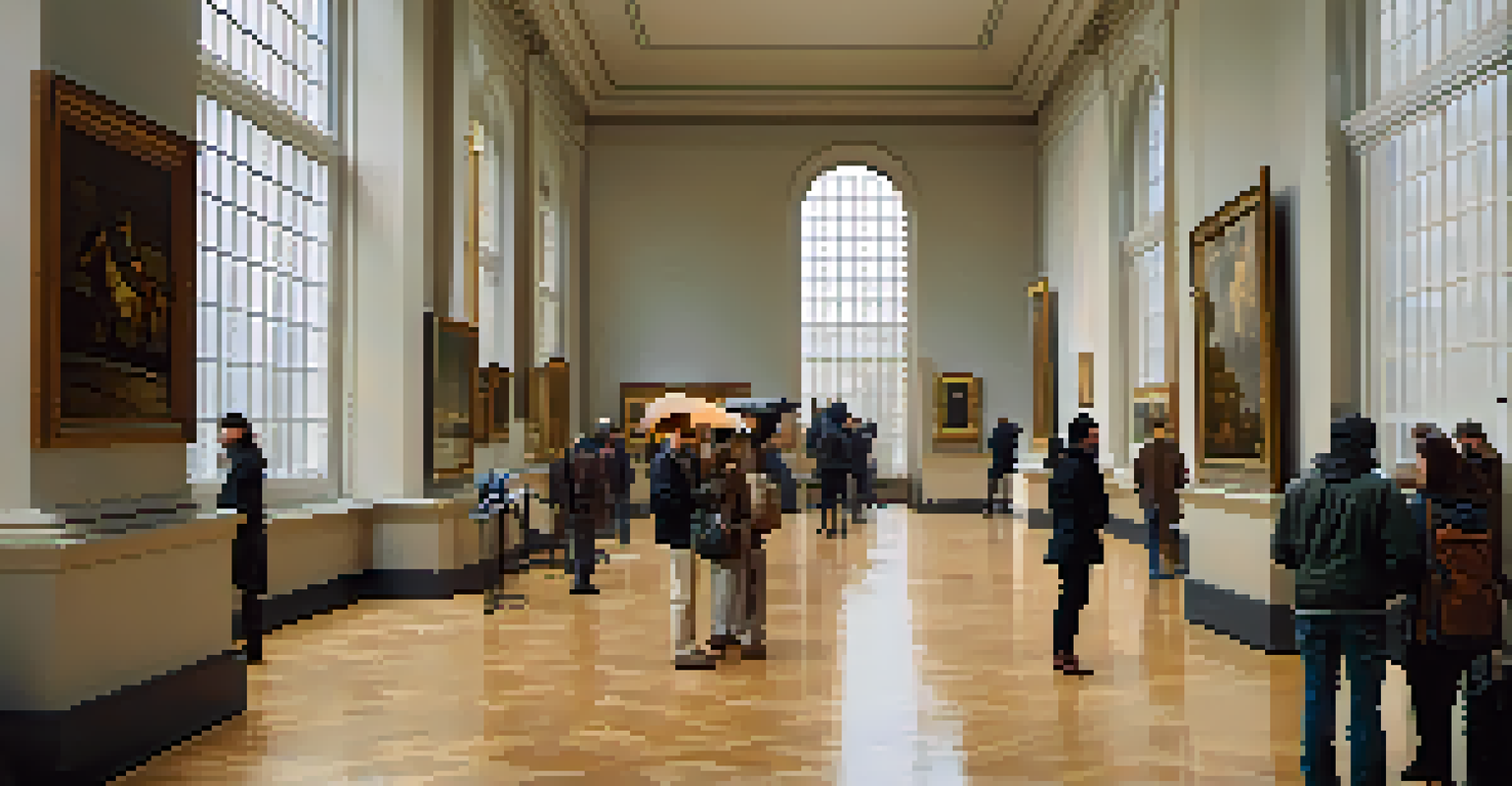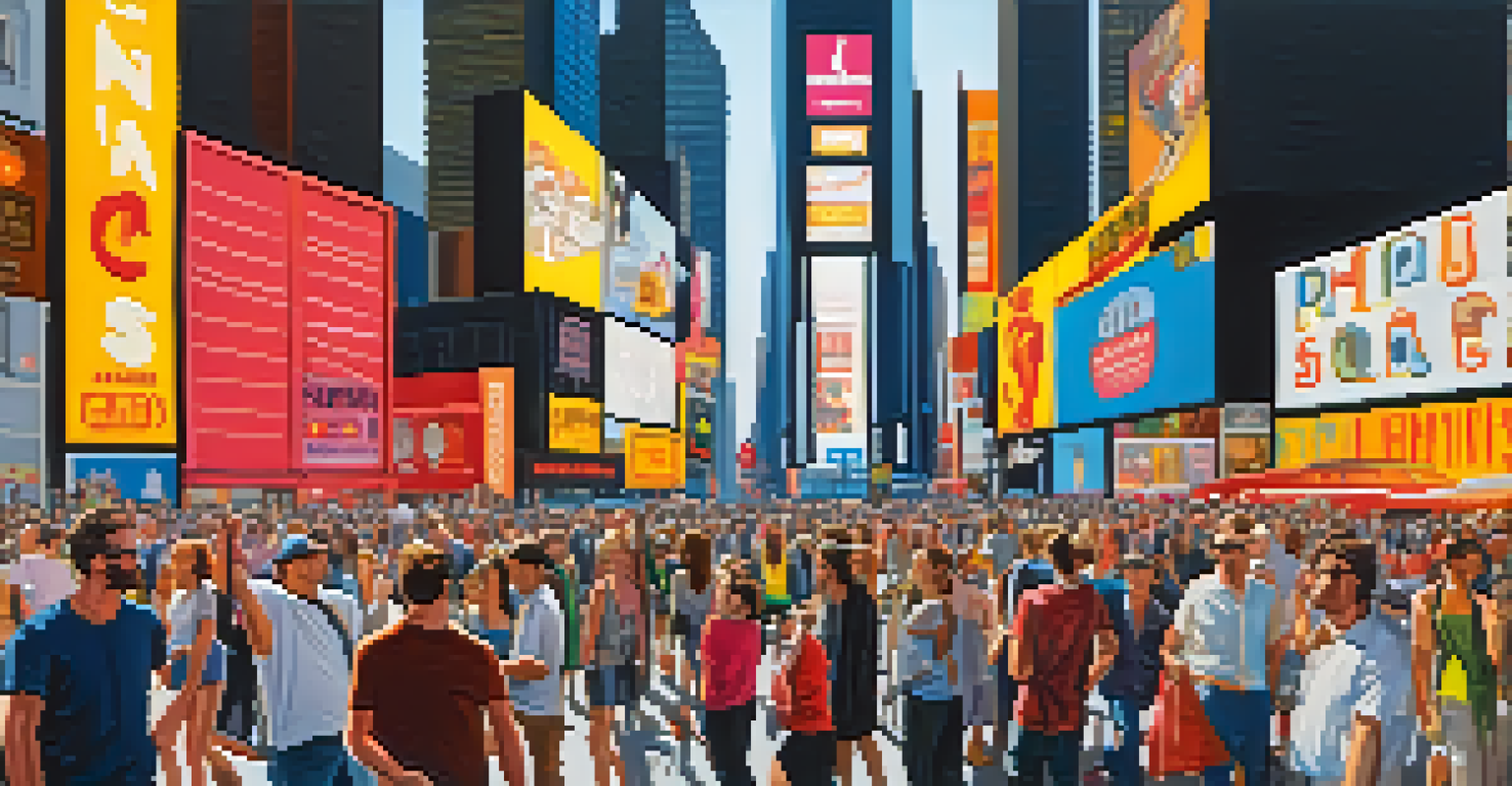The Influence of Weather on NYC's Daily Tourism Patterns

Understanding NYC's Unique Climate and Its Variability
New York City experiences a diverse climate with four distinct seasons, each bringing its own charm. In summer, the city buzzes with energy, while winter transforms it into a snowy wonderland. This variety attracts millions of tourists year-round, but their activities can shift dramatically based on the weather.
Weather is a great metaphor for life – sometimes it's good, sometimes it's bad, and there's nothing much you can do about it but carry an umbrella.
For instance, sunny days in spring and fall often see tourists flocking to Central Park, enjoying picnics and outdoor festivals. Conversely, a rainy day might deter visitors from exploring the streets, leading them to seek indoor attractions like museums or Broadway shows instead. Thus, weather plays a crucial role in shaping tourists' experiences.
Understanding this variability helps businesses tailor their services, from offering rain check discounts to promoting seasonal attractions. By embracing the weather, NYC can enhance visitors' experiences and keep them engaged, regardless of the forecast.
Seasonal Trends: How Weather Drives Visitor Numbers
Seasonality in New York City directly impacts tourism patterns, with weather acting as a major influencer. During summer months, the city sees a surge of tourists eager to explore its iconic landmarks under the sun. However, as temperatures drop in winter, many visitors might choose to stay indoors, leading to a decline in foot traffic.

For example, during the holiday season, despite the cold, many tourists flock to see festive decorations and ice skating rinks. This shows that even in less favorable weather, unique attractions can draw crowds. Analyzing these seasonal trends allows tourism operators to prepare and adjust their offerings accordingly.
Weather Shapes NYC Tourism
The diverse climate of New York City significantly influences tourist activities, with weather patterns affecting visitor numbers and preferences.
Ultimately, understanding how weather affects these patterns helps businesses strategize their marketing efforts, ensuring they attract tourists no matter the season. This adaptability is key to thriving in the competitive tourism landscape of NYC.
The Impact of Rain on NYC Tourism Activities
Rainy days in New York City can significantly alter tourists' plans, often leading to a dip in outdoor activities. While some might cancel their sightseeing, others find indoor activities more appealing. Museums, art galleries, and culinary experiences tend to see increased foot traffic during downpours, showcasing how weather influences choices.
In the middle of difficulty lies opportunity.
Take, for instance, the Metropolitan Museum of Art. On a rainy day, the museum becomes a sanctuary for visitors looking to escape the storm. This shift in behavior illustrates how businesses can capitalize on weather changes by promoting indoor attractions and creating tailored experiences for tourists.
Additionally, rain often prompts tourists to seek out cozy cafes and restaurants, which can boost sales for local eateries. By understanding these patterns, NYC's tourism industry can effectively adapt and thrive, regardless of the weather conditions.
Sunshine and Crowds: The Draw of Pleasant Weather
Conversely, sunny weather in NYC can lead to bustling streets filled with tourists eager to explore. Warm, bright days invite people to enjoy outdoor attractions like the High Line or Brooklyn Bridge Park, creating a vibrant atmosphere. This influx can sometimes lead to overcrowding at popular sites, affecting the overall experience.
For example, on a beautiful Saturday, you might find Times Square packed with visitors snapping photos and soaking in the sights. This surge in tourism not only boosts the local economy but also encourages businesses to expand their outdoor offerings, such as al fresco dining and street performances.
Indoor Options Thrive in Rain
Rainy days lead tourists to seek out indoor attractions, such as museums and cafes, boosting their popularity during inclement weather.
By recognizing the correlation between sunny weather and increased tourism, NYC's businesses can optimize staffing and inventory to meet demand. This proactive approach ensures that both tourists and locals enjoy the city's offerings to the fullest, creating memorable experiences.
Extreme Weather Events and Their Effects on Tourism
While NYC's climate is generally favorable, extreme weather events can pose significant challenges for tourism. Hurricanes, snowstorms, or heatwaves can disrupt travel plans and deter visitors from coming to the city. These events can lead to cancellations, affecting local businesses that rely heavily on tourist spending.
For instance, during Hurricane Sandy in 2012, many attractions were closed, and tourism took a noticeable hit. Such disruptions highlight the importance of preparedness and communication within the tourism sector. Businesses must have contingency plans in place to address sudden weather changes and minimize impact.
Moreover, understanding how extreme weather affects tourism can help NYC develop better infrastructure and response strategies. By learning from past events, the city can enhance its resilience and ensure a smoother experience for visitors, even during unexpected challenges.
Weather-Driven Marketing Strategies for NYC Attractions
Given the influence of weather on tourism, many NYC attractions have adopted weather-driven marketing strategies. By analyzing weather forecasts, businesses can promote specific activities that align with current conditions. For example, on a sunny day, a rooftop bar might advertise happy hour specials to attract tourists looking for a place to unwind.
Additionally, businesses can use social media to share real-time updates about weather-related events. A sudden snowstorm might inspire a last-minute promotion for winter-themed attractions, drawing in locals and tourists alike. This agile approach not only attracts visitors but also builds a sense of community around shared experiences.
Tech Enhances Travel Planning
Technology provides real-time weather updates, helping tourists make informed decisions and enhancing their overall experience in NYC.
Ultimately, leveraging weather data allows NYC's tourism industry to remain dynamic and responsive. This adaptability not only enhances visitor experiences but also fosters loyalty, encouraging tourists to return regardless of the weather.
The Role of Technology in Weather and Tourism Trends
In today's digital age, technology plays a vital role in tracking and predicting weather patterns, which can significantly impact tourism. Apps and websites provide real-time weather updates, helping tourists plan their activities accordingly. This accessibility of information empowers visitors to make informed decisions about their travel plans.
For instance, a tourist can check the weather forecast before heading out to see the Statue of Liberty, ensuring they are prepared for any sudden changes. This convenience not only enhances their experience but also increases satisfaction, leading to positive reviews and recommendations.

Moreover, businesses can use technology to analyze historical weather data, identifying trends that inform their marketing strategies. By understanding how weather affects tourism patterns, NYC can continue to evolve and cater to the needs of its visitors effectively.